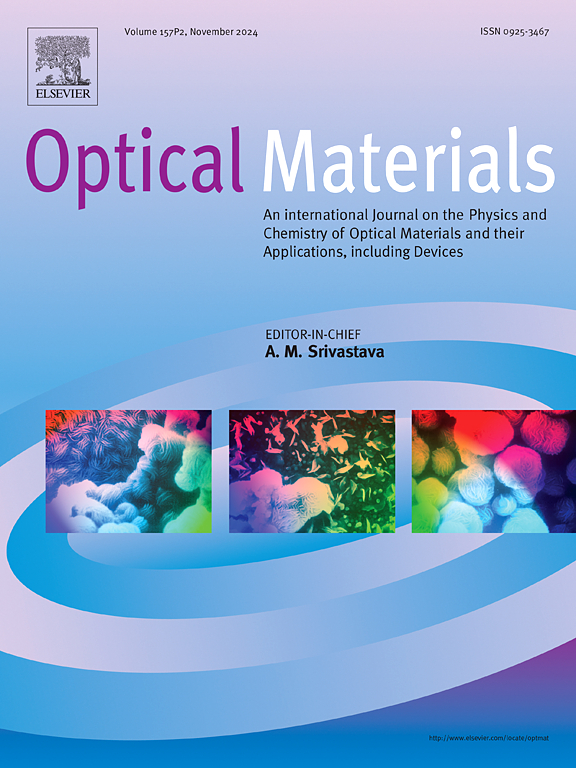Phase evolution and thermally enhanced Red-NIR upconversion luminescence in ZrO2:Yb3+/Tm3+
IF 3.8
3区 材料科学
Q2 MATERIALS SCIENCE, MULTIDISCIPLINARY
引用次数: 0
Abstract
The near-infrared (NIR) luminescence of lanthanide ions shows important application potential in biological imaging owing to its good tissue penetration ability and less biological tissue photodamage in comparison to visible luminescence. However, at present, the luminescence intensity of lanthanide-doped NIR luminescent materials is generally low, which greatly restricts their development in bioimaging application. In this work, NIR-emitted ZrO2:Yb3+/Tm3+ sample was synthesized by urea-assisted co-precipitation method. The crystal phase evolution process and luminescence properties of ZrO2:Yb3+/Tm3+ sample were precisely controlled by lanthanide ions doping. A 2.3-fold enhancement of the upconversion emission was recorded for the ZrO2:Yb3+/Tm3+ sample as the temperature was increased from 25 °C to 225 °C because of the phonon-assisted electron population processes at specific energy levels. Our research results may inspire new ideas for developing thermally enhanced lanthanide-doped upconversion materials with high emission intensities.

ZrO2:Yb3+/Tm3+的相演化和热增强红-近红外上转换发光
镧系离子的近红外发光与可见光相比具有良好的组织穿透能力和较小的生物组织光损伤,在生物成像中具有重要的应用潜力。然而,目前掺镧近红外发光材料的发光强度普遍较低,这极大地制约了其在生物成像应用方面的发展。本文采用尿素辅助共沉淀法合成了nir发射的ZrO2:Yb3+/Tm3+样品。通过镧系离子掺杂,精确控制了ZrO2:Yb3+/Tm3+样品的晶相演化过程和发光性能。当温度从25℃升高到225℃时,由于声子辅助电子在特定能级上的居群过程,ZrO2:Yb3+/Tm3+样品的上转换发射增强了2.3倍。我们的研究结果为开发具有高发射强度的热增强镧掺杂上转换材料提供了新的思路。
本文章由计算机程序翻译,如有差异,请以英文原文为准。
求助全文
约1分钟内获得全文
求助全文
来源期刊

Optical Materials
工程技术-材料科学:综合
CiteScore
6.60
自引率
12.80%
发文量
1265
审稿时长
38 days
期刊介绍:
Optical Materials has an open access mirror journal Optical Materials: X, sharing the same aims and scope, editorial team, submission system and rigorous peer review.
The purpose of Optical Materials is to provide a means of communication and technology transfer between researchers who are interested in materials for potential device applications. The journal publishes original papers and review articles on the design, synthesis, characterisation and applications of optical materials.
OPTICAL MATERIALS focuses on:
• Optical Properties of Material Systems;
• The Materials Aspects of Optical Phenomena;
• The Materials Aspects of Devices and Applications.
Authors can submit separate research elements describing their data to Data in Brief and methods to Methods X.
 求助内容:
求助内容: 应助结果提醒方式:
应助结果提醒方式:


